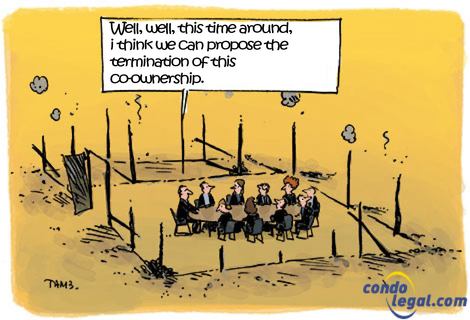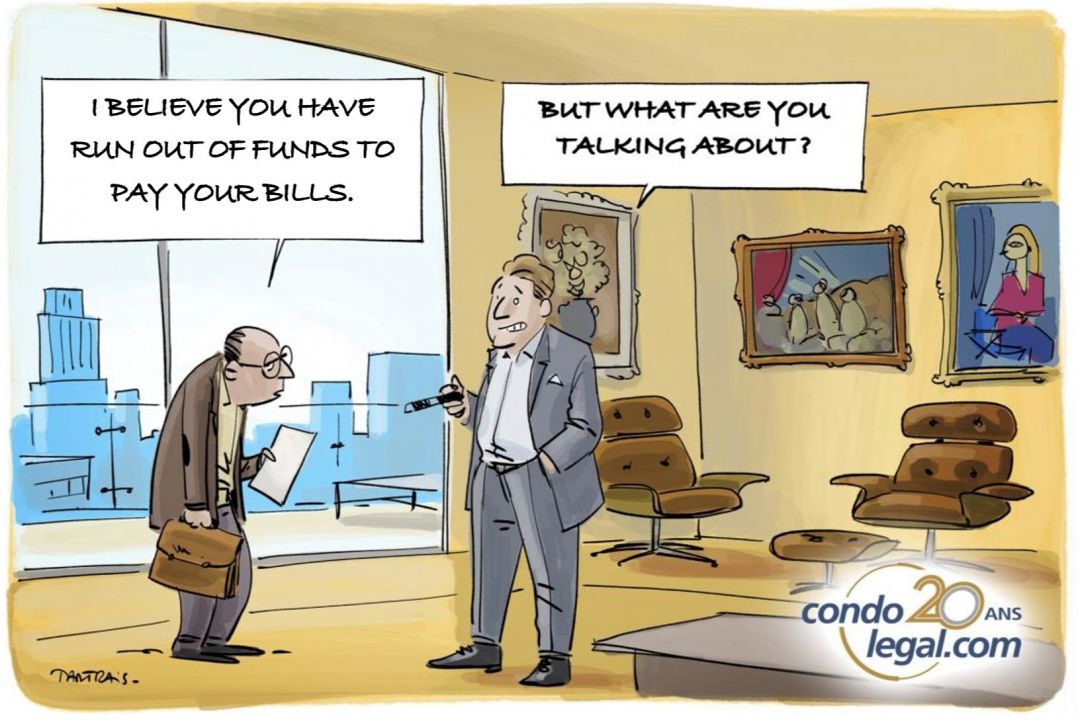21 Articles

The rules for voting in meeting of co-owners vary depending on the importance of the decision to be made. They require a complex calculations in order to determine whether a the required majority has been reached. To do so, you must make sure that the register of co-owners is up to date, and that the compilation of votes is done according to the relative value specific to each fraction. This reduces the risk of contestation of an adopted resolution. That said, some decisions have…...

The declaration of co-ownership generally contains the terms and conditions concerning the conduct of the meeting of co-owners by defining rules of procedure and the role of the meeting officers. Key figures of the assembly of co-owners, they ensure the smooth running of it. Their appointment is therefore necessary for the holding of any meeting of co-owners. These are generally elected at the start of the meeting, in a separate vote taken by an absolute…...

The declaration of co-ownership is an agreement that organizes and regulates the collective life of the of the co-owners and occupants of the building. This agreement defines their rights and obligations. As it is an authentic act, it must be received by a notary. The declaration of co-ownership is often signed by the developer who acts as sole proprietor, or sometimes, by undivided co-owners who wish to subject their immovable (held in co-ownership) to the…...

The destination of the immovable, of the private portions and of the common portions is a fundamental concept in co-ownerships. It is both a real regulator of the rights and obligations of co-owners and a reference value between the permit and the prohibited. The destination of the building is determined in the 1st part of the declaration of co-ownership (constituting act of co-ownership). It is it that also makes it possible to establish the type of co-ownership established and defines…...

The divided co-ownership of a building is not necessarily intended to last for eternity. The end of the co-ownership, and therefore the dissolution and liquidation of the syndicate, is justifiable, for various reasons. The dissolution of a co-ownership leads to a liquidation process. This process is regulated by articles 1108 and 1109 of the Civil Code of Québec, which refer to the rules applicable to legal persons concerning their liquidation.The question of putting an end to your co-ownership may one day arise. There are…...

Whether you are a real estate developer (for a new building) or several owners of an existing building who wish to convert it, the rules for subjecting a building to divided co-ownership are the same. The creation of a divided co-ownership is necessary when an immovable must be divided into lots composed of a private portion and a share of the common portions, and which belong to one or more different persons. The community of co-owners acquires…...

The syndicate of co-owners, as a legal person, has a juridical personality. It acts through two decision-making bodies, the meeting of the co-owners and the board of directors. The directors are natural persons who make up the board of directors of the syndicate of co-owners, of which they are also the mandataries. In principle, it is the board of directors as a group that makes the decisions and not the directors individually. The latter are appointed or elected…...

The presence of a board of directors is mandatory in a co-ownership. It is the executive body of the syndicate and its legal representative. As for its members, they act as mandataries of the syndicate. Because of the phenomenon of co-ownership in difficulty or dysfunctional, the legislator, through Bill 16, has put in place judicial mechanisms to overcome these difficulties. Article 1086.4 was thus introduced into the Civil Code of Quebec. This addition allows the…...

The presence of a Board of Directors is mandatory in a co-ownership. It is the executive body of the syndicate and its legal representative. Its members act as the mandataries of the syndicate. When a co-ownership is newly constituted, the declaration of co-ownership generally provides for the appointment of a interim director, who exercises the functions of the Board of Directors until the Meeting of co-owners appoints a new board of directors. This transitional period is generally delicate because…...

Expenses related to the maintenance and administration of the common portions of a co-ownerships start from its constitution as a legal person. It is therefore necessary that each co-ownership sets up, upon publication of the declaration of co-ownership, a Board of Directors to administer it. This board of directors is the executive body of the syndicate and its legal representative. Its members act as the mandataries of the syndicate. To ensure the star up of the syndicate, the developer…...
